Rota Planning Glossary
This glossary covers key terminology related to rota planning, shift scheduling, and staff workload management.
It's a handy reference for anyone involved in creating and managing staff rotas and schedules. Many of these terms are used in our rota planner employee scheduling software.
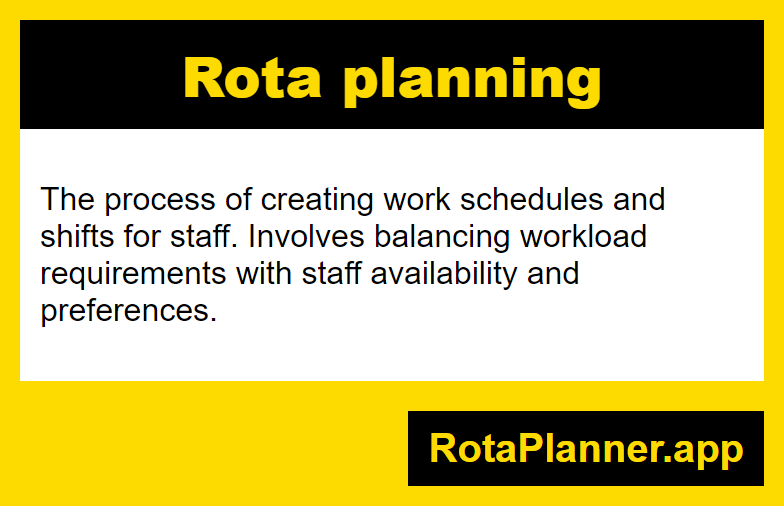
Rota planning
The process of creating work schedules and shifts for staff. Involves balancing workload requirements with staff availability and preferences.
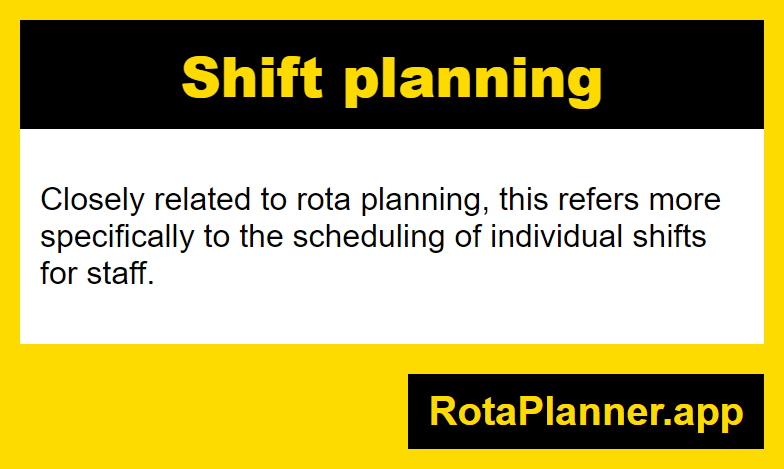
Shift planning
Closely related to rota planning, this refers more specifically to the scheduling of individual shifts for staff.
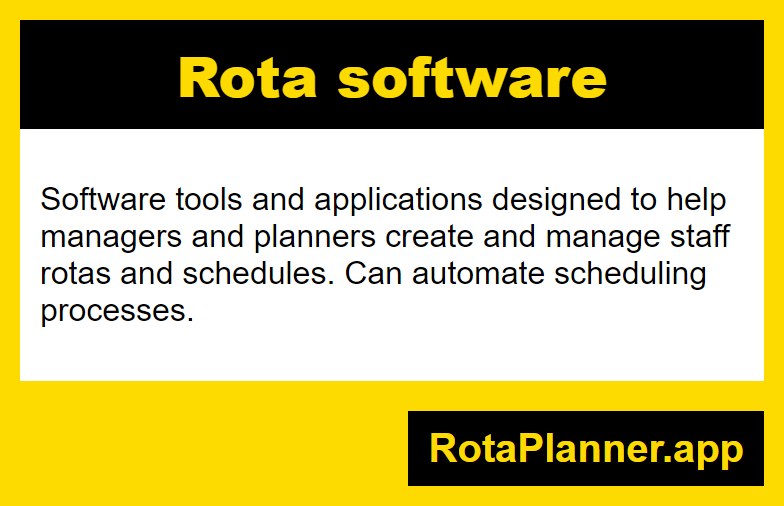
Rota software
Software tools and applications designed to help managers and planners create and manage staff rotas and schedules. Can automate scheduling processes.
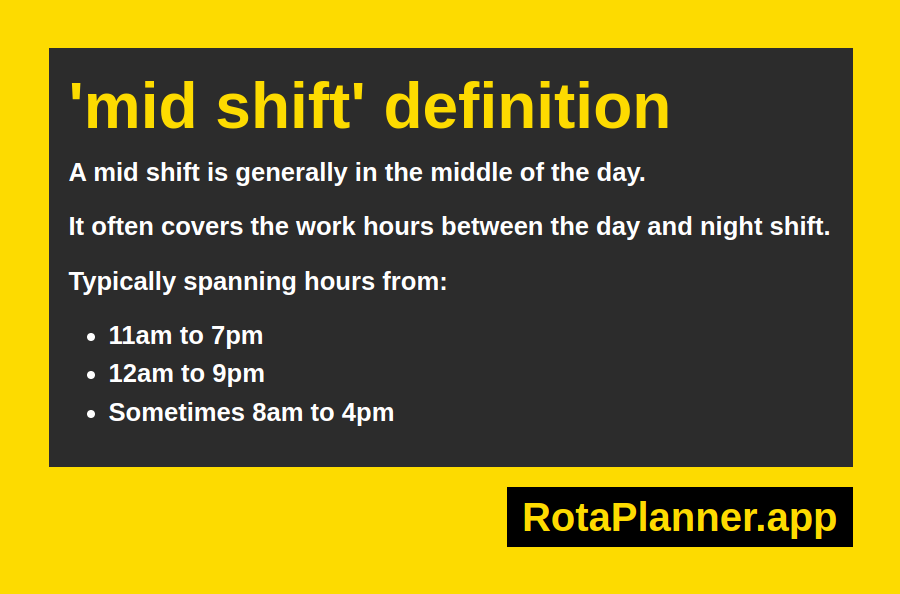
Mid-shift
The term "mid shift" refers to the middle time period of a scheduled work shift.
For example, if a full factory shift runs from 7am - 3pm, the mid shift time would likely refer to the hours around 12 pm.
Another example could be an overnight hospital shift from 11pm - 7am. The mid shift hours would fall around 3-4am in the early morning.
Things like lunch and rest breaks or responsibility rotations may align with or change at mid shift.
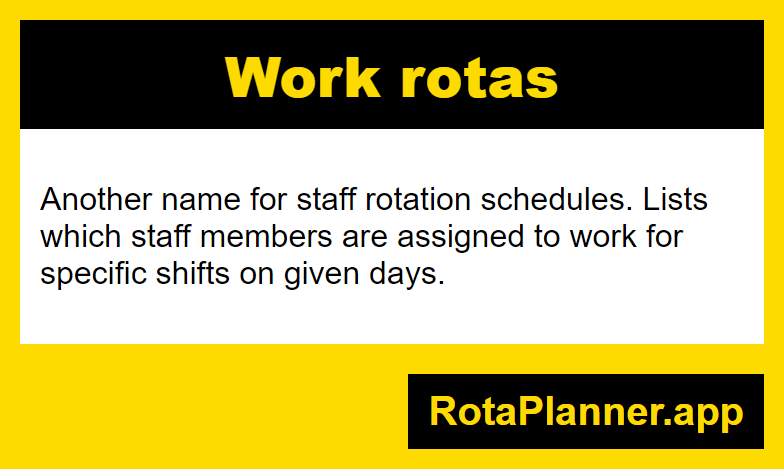
Work rotas
Another name for staff rotation schedules. Lists which staff members are assigned to work for specific shifts on given days.
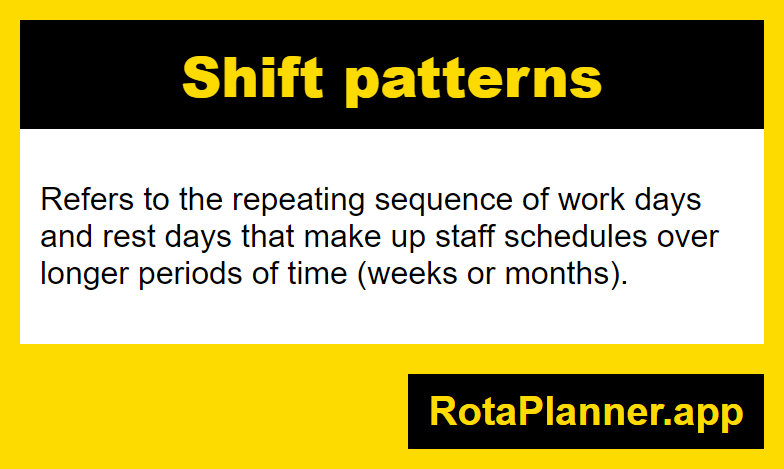
Shift patterns
Refers to the repeating sequence of work days and rest days that make up staff schedules over longer periods of time (weeks or months).
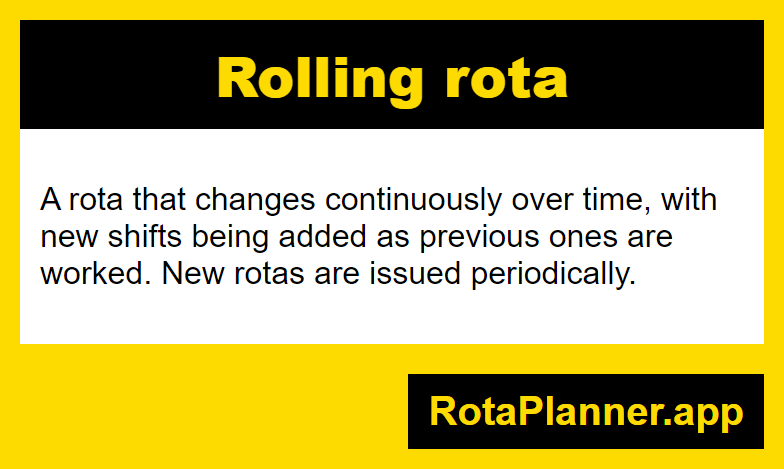
Rolling rota
A rota that changes continuously over time, with new shifts being added as previous ones are worked. New rotas are issued periodically.
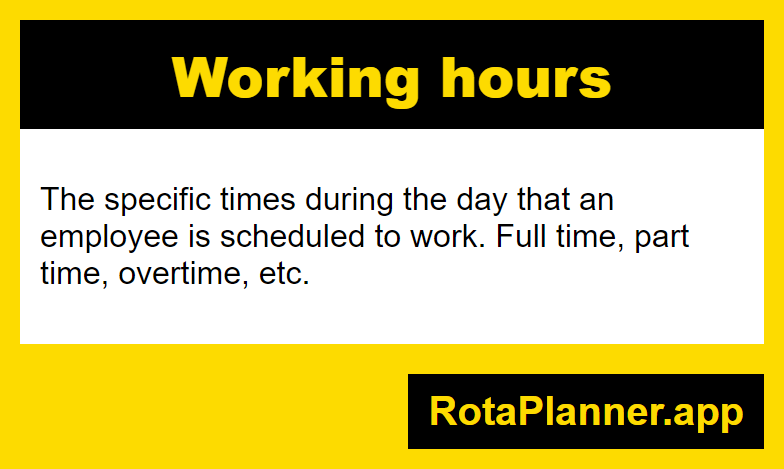
Working hours
The specific times during the day that an employee is scheduled to work. Full time, part time, overtime, etc.
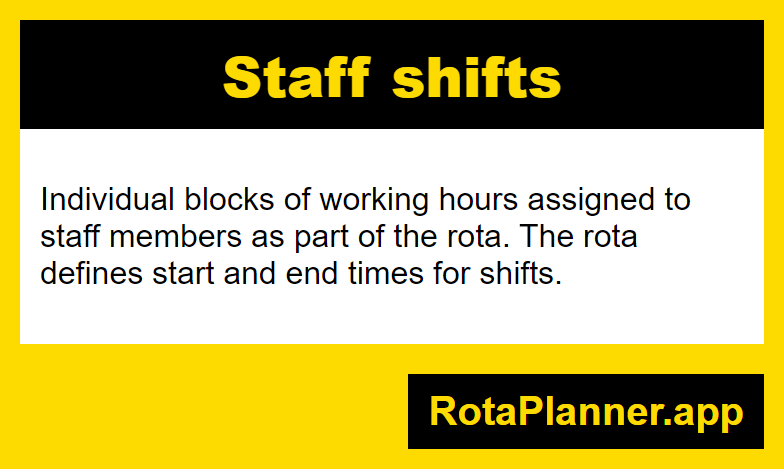
Staff shifts
Individual blocks of working hours assigned to staff members as part of the rota. The rota defines start and end times for shifts.
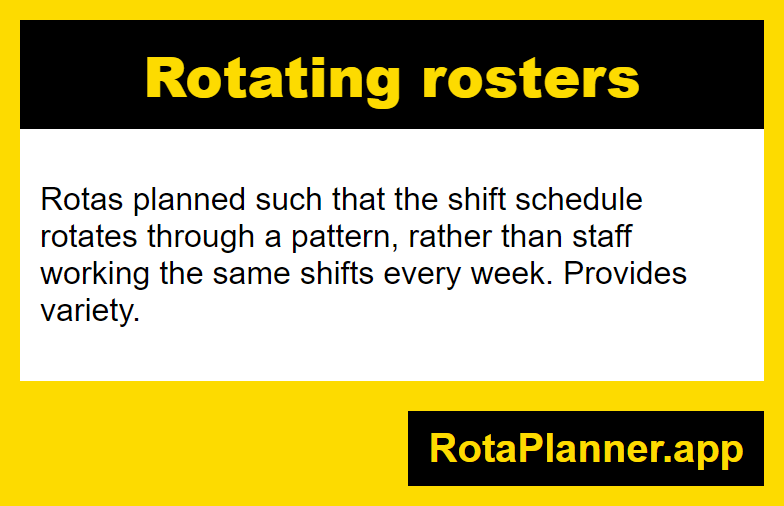
Rotating rosters
Rotas planned such that the shift schedule rotates through a pattern, rather than staff working the same shifts every week. Provides variety.
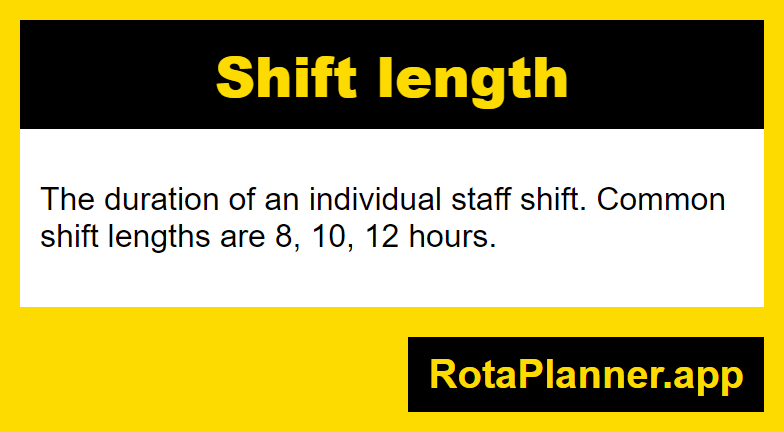
Shift length
The duration of an individual staff shift. Common shift lengths are 8, 10, 12 hours.
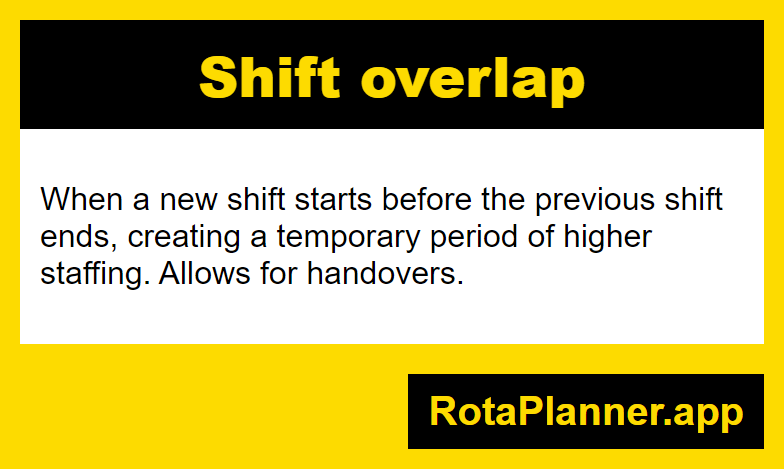
Shift overlap
When a new shift starts before the previous shift ends, creating a temporary period of higher staffing. Allows for handovers.
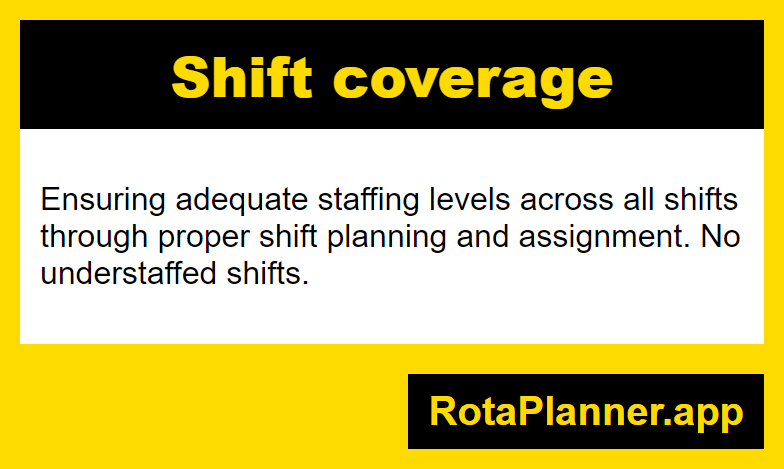
Shift coverage
Ensuring adequate staffing levels across all shifts through proper shift planning and assignment. No understaffed shifts.
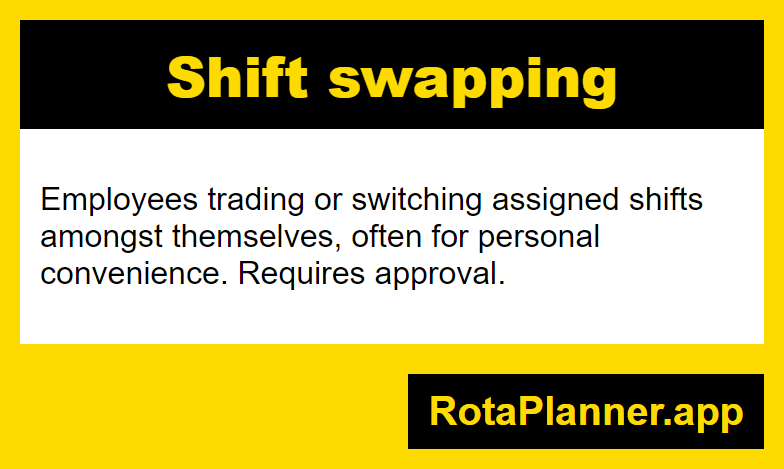
Shift swapping
Employees trading or switching assigned shifts amongst themselves, often for personal convenience. Requires approval.
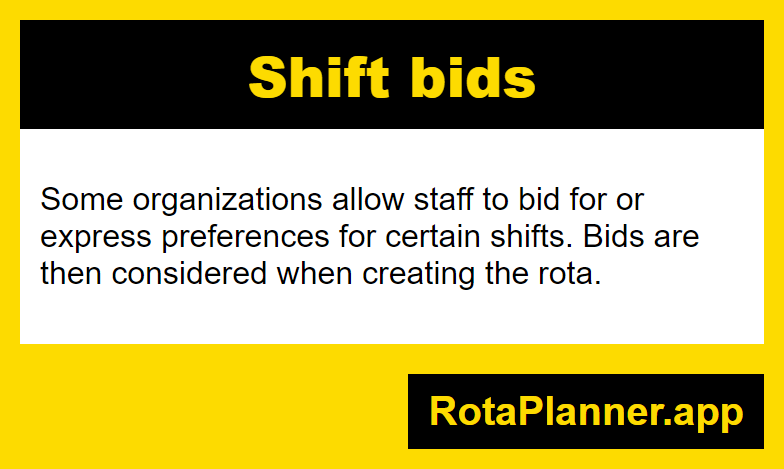
Shift bids
Some organizations allow staff to bid for or express preferences for certain shifts. Bids are then considered when creating the rota.
See our full guide on shift bids.
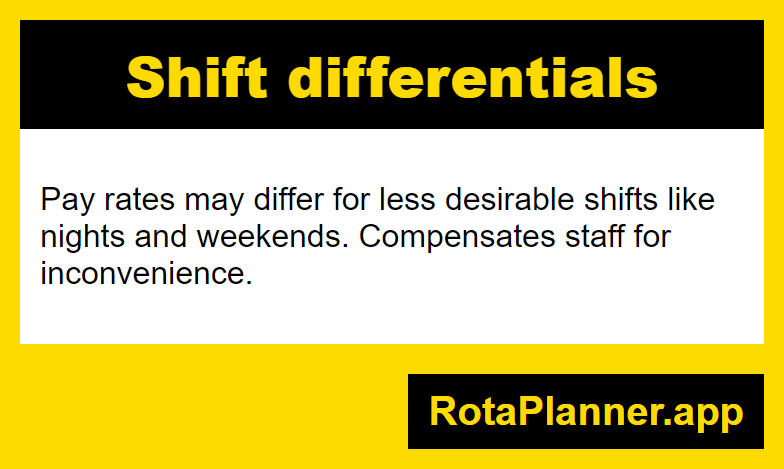
Shift differentials
Pay rates may differ for less desirable shifts like nights and weekends. Compensates staff for inconvenience.
See our full guide on shift differentials.
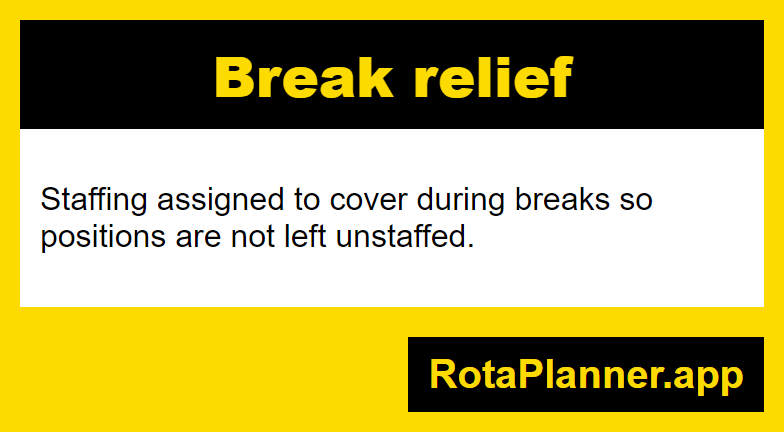
Break relief
Staffing assigned to cover during breaks so positions are not left unstaffed.
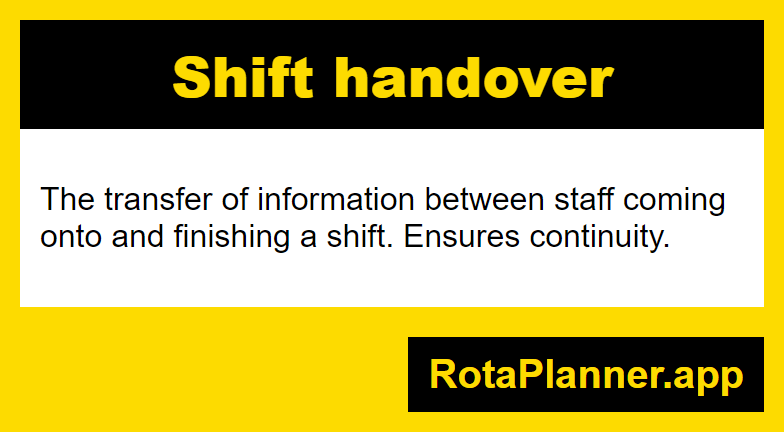
Shift handover
The transfer of information between staff coming onto and finishing a shift. Ensures continuity.
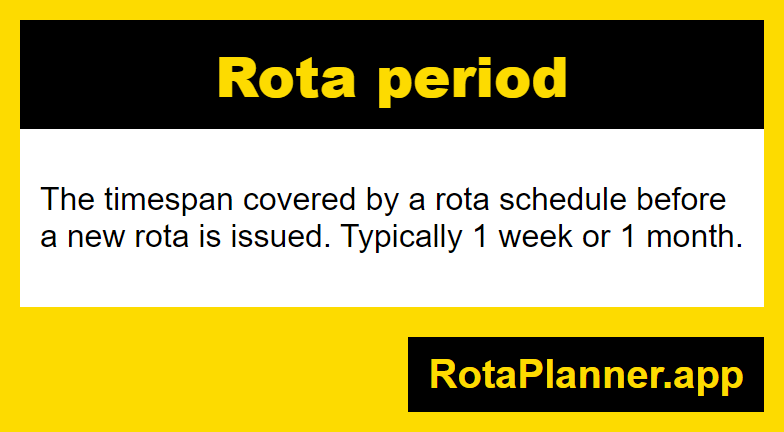
Rota period
The timespan covered by a rota schedule before a new rota is issued. Typically 1 week or 1 month.
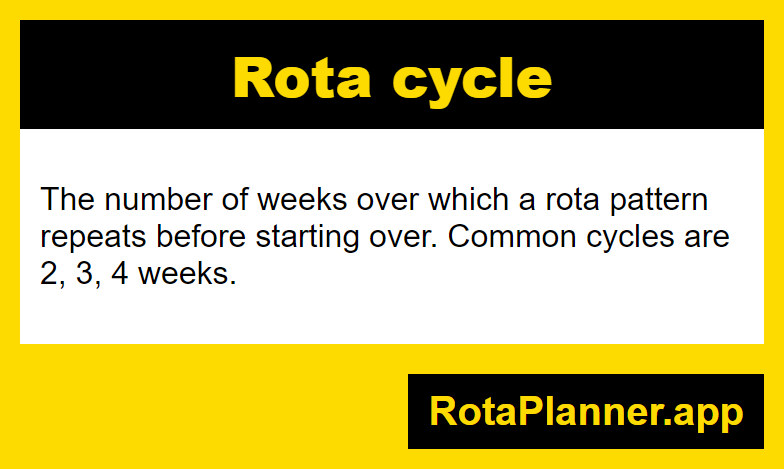
Rota cycle
The number of weeks over which a rota pattern repeats before starting over. Common cycles are 2, 3, 4 weeks.
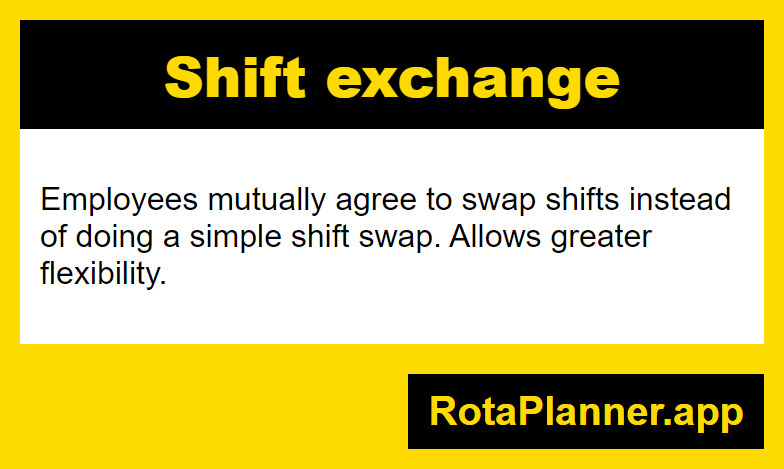
Shift exchange
Employees mutually agree to swap shifts instead of doing a simple shift swap. Allows greater flexibility.
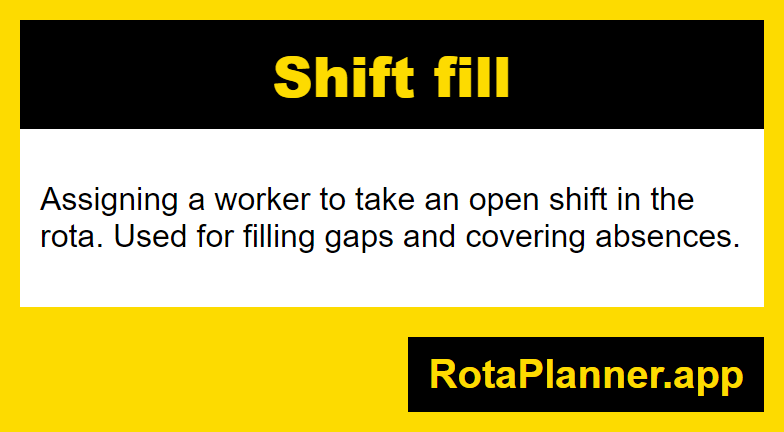
Shift fill
Assigning a worker to take an open shift in the rota. Used for filling gaps and covering absences.
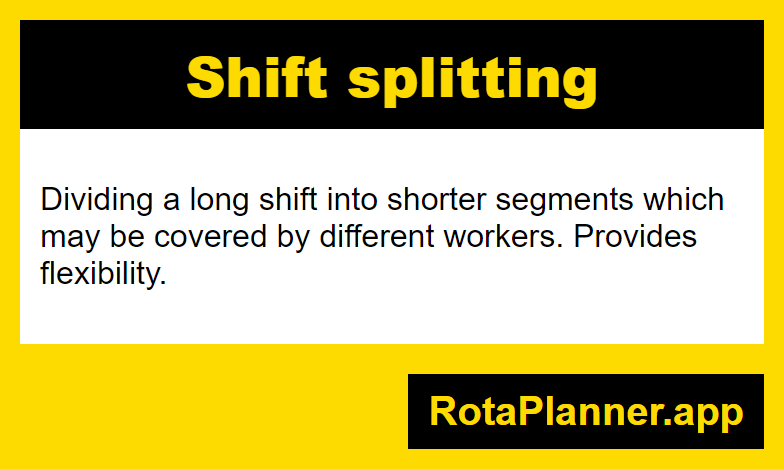
Shift splitting
Dividing a long shift into shorter segments which may be covered by different workers. Provides flexibility.

Shift cancellation
Removing or cancelling a scheduled shift, often due to changed workload demands or other circumstances.
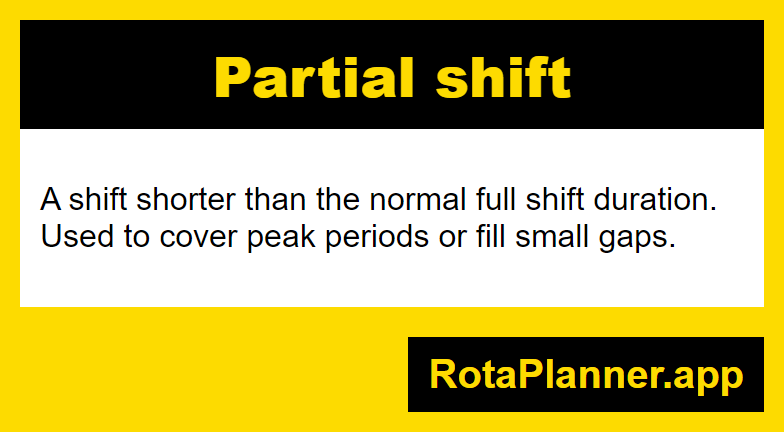
Partial shift
A shift shorter than the normal full shift duration. Used to cover peak periods or fill small gaps.
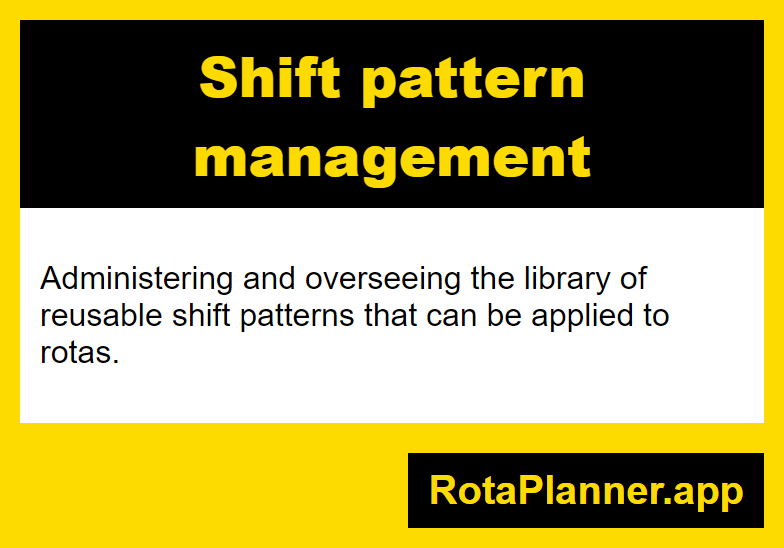
Shift pattern management
Administering and overseeing the library of reusable shift patterns that can be applied to rotas.
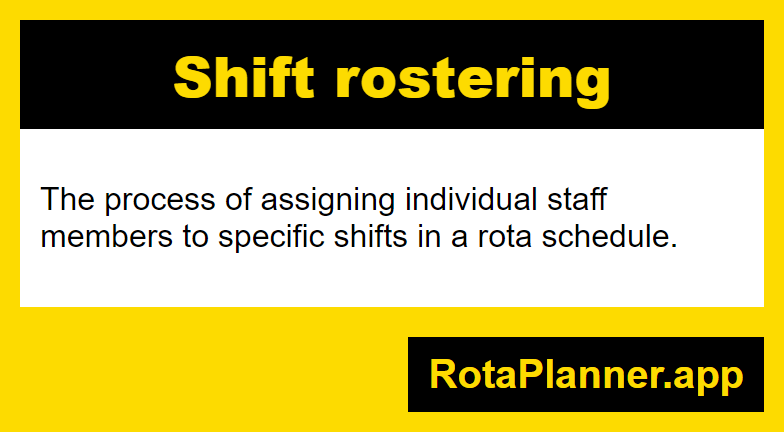
Shift rostering
The process of assigning individual staff members to specific shifts in a rota schedule.
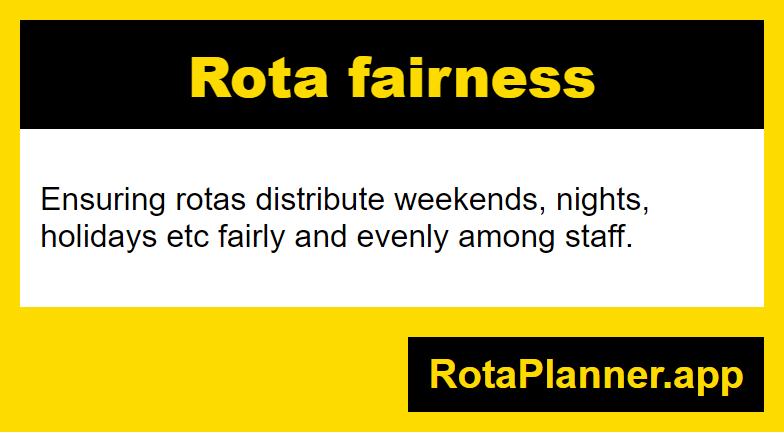
Rota fairness
Ensuring rotas distribute weekends, nights, holidays etc fairly and evenly among staff.
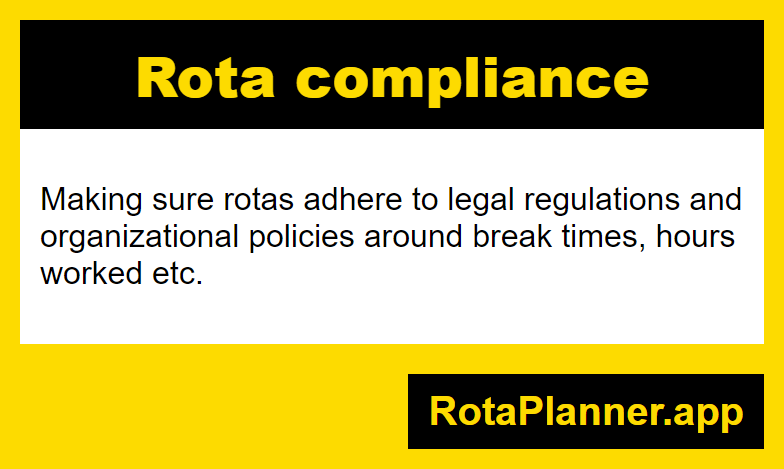
Rota compliance
Making sure rotas adhere to legal regulations and organizational policies around break times, hours worked etc.
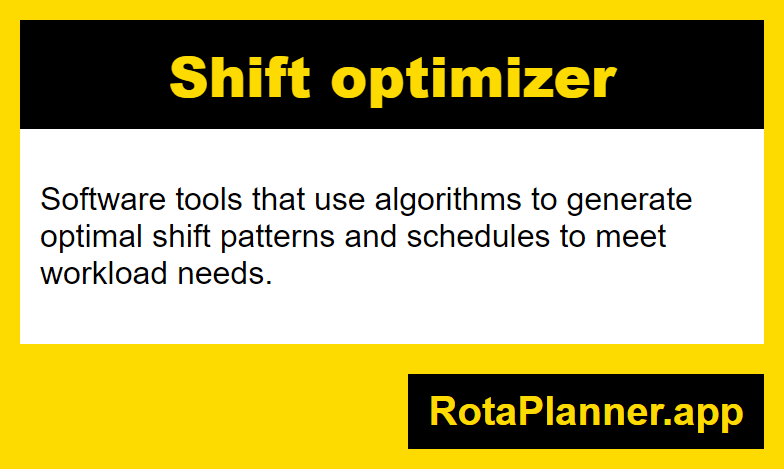
Shift optimizer
Software tools that use algorithms to generate optimal shift patterns and schedules to meet workload needs.

Fatigue management
Strategies for mitigating employee fatigue through proper shift length, rotation, and scheduling policies.
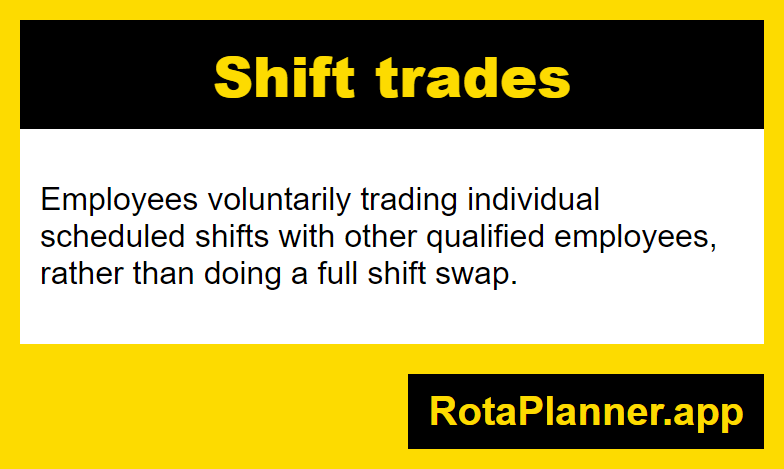
Shift trades
Employees voluntarily trading individual scheduled shifts with other qualified employees, rather than doing a full shift swap.
See our full guide on shift trades.
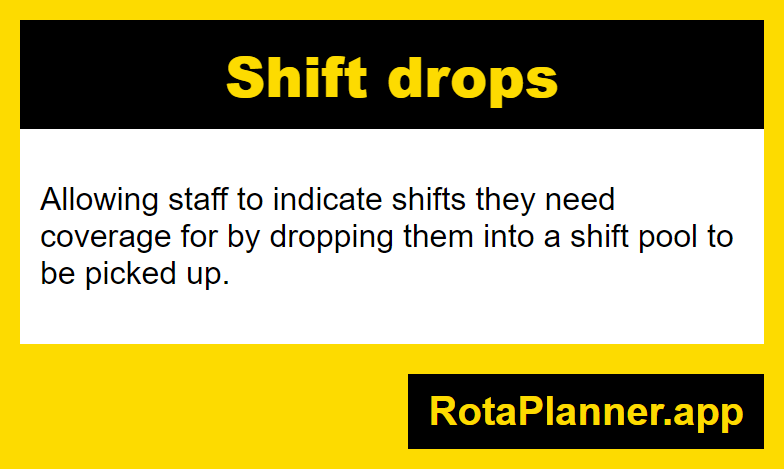
Shift drops
Allowing staff to indicate shifts they need coverage for by dropping them into a shift pool to be picked up.
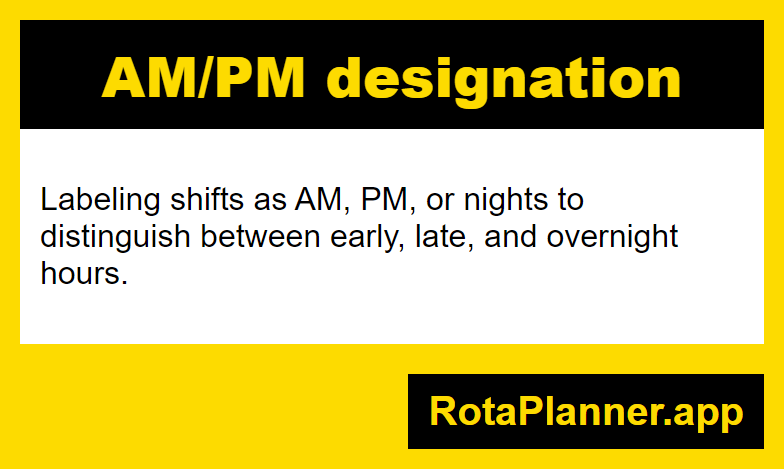
AM/PM designation
Labeling shifts as AM, PM, or nights to distinguish between early, late, and overnight hours.
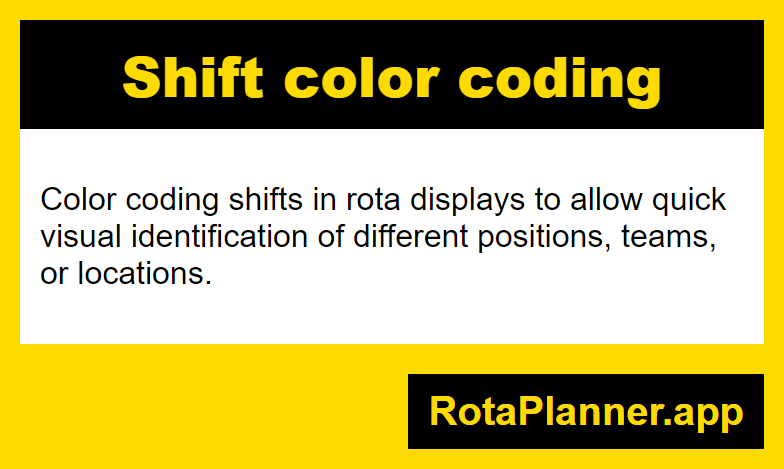
Shift color coding
Color coding shifts in rota displays to allow quick visual identification of different positions, teams, or locations.
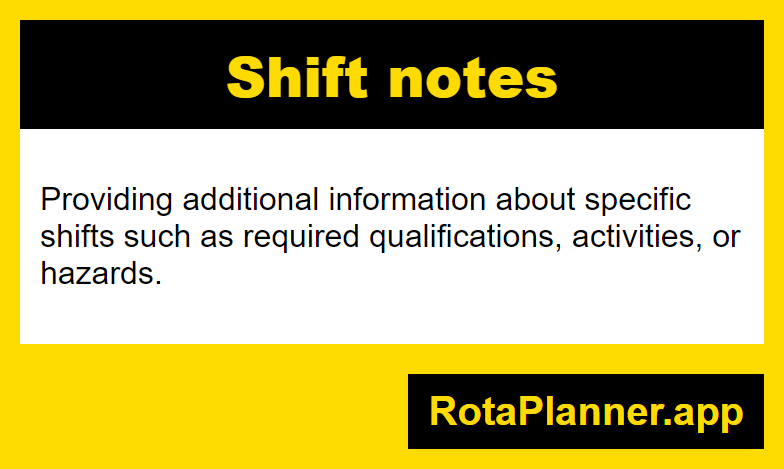
Shift notes
Providing additional information about specific shifts such as required qualifications, activities, or hazards.

Shift bidding seniority
Basing the order of shift bidding on employees' seniority, giving more senior staff first choice of shifts.
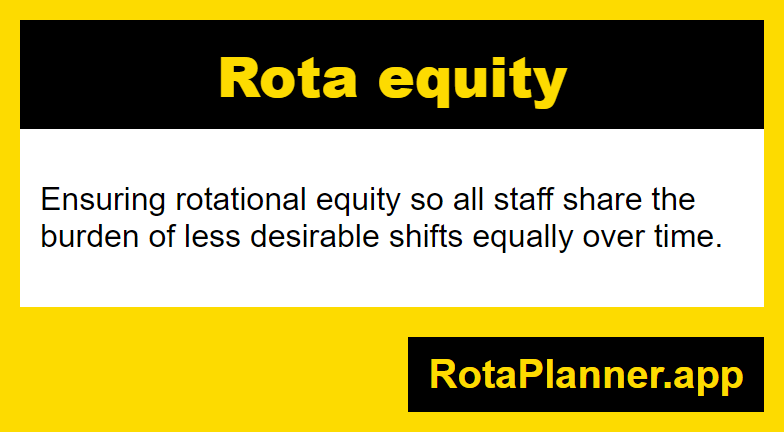
Rota equity
Ensuring rotational equity so all staff share the burden of less desirable shifts equally over time.
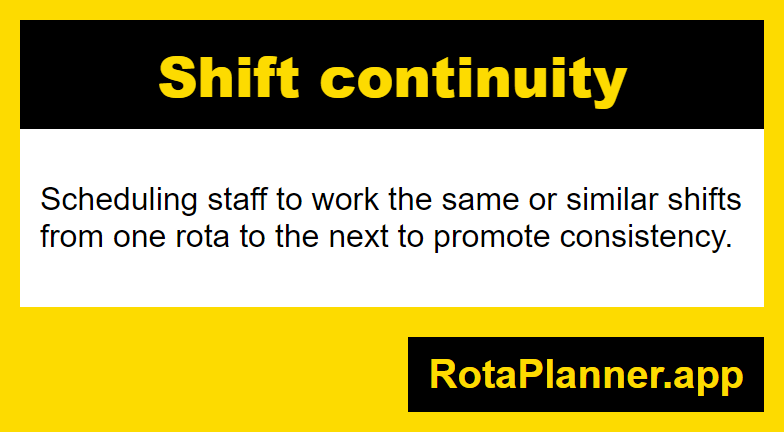
Shift continuity
Scheduling staff to work the same or similar shifts from one rota to the next to promote consistency.
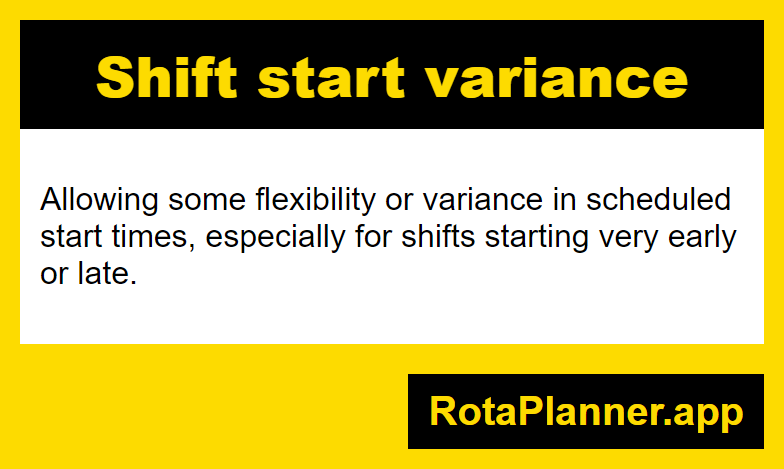
Shift start variance
Allowing some flexibility or variance in scheduled start times, especially for shifts starting very early or late.
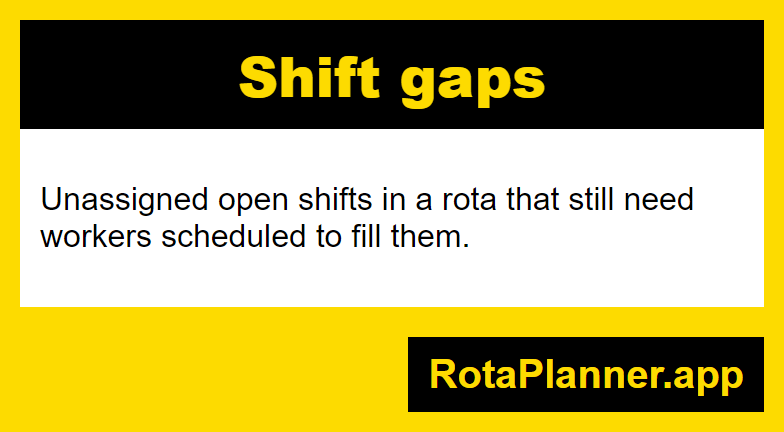
Shift gaps
Unassigned open shifts in a rota that still need workers scheduled to fill them.
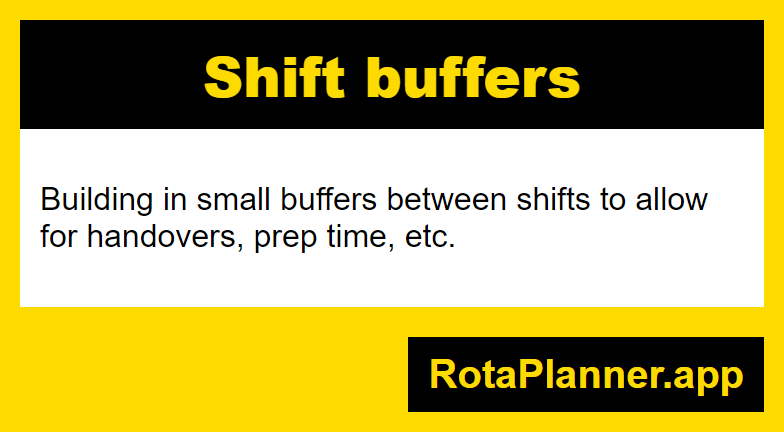
Shift buffers
Building in small buffers between shifts to allow for handovers, prep time, etc.

Weekend warrior
Employees who preferentially work weekends and are less available weekdays.

Shift prerequisites
Requirements like training, certifications, or clearances needed to be eligible for certain shifts.
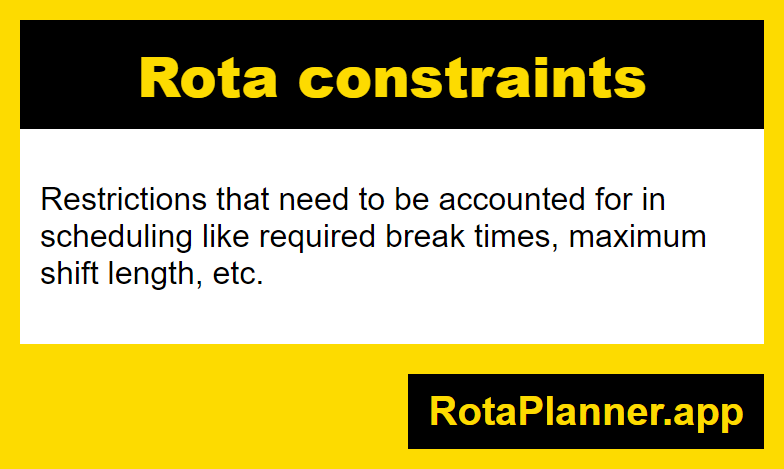
Rota constraints
Restrictions that need to be accounted for in scheduling like required break times, maximum shift length, etc.
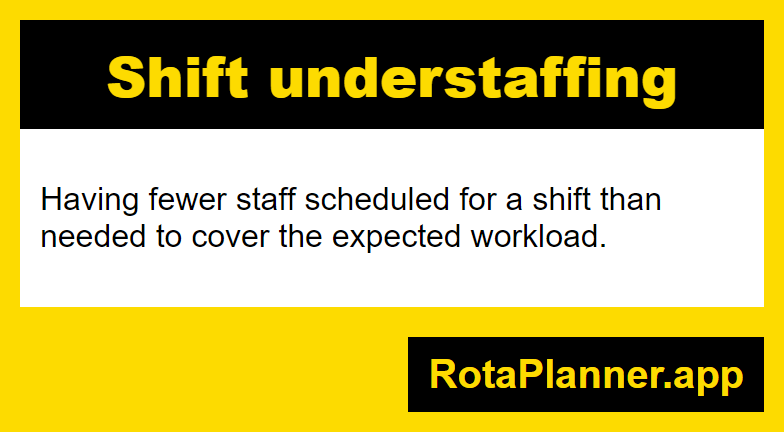
Shift understaffing
Having fewer staff scheduled for a shift than needed to cover the expected workload.
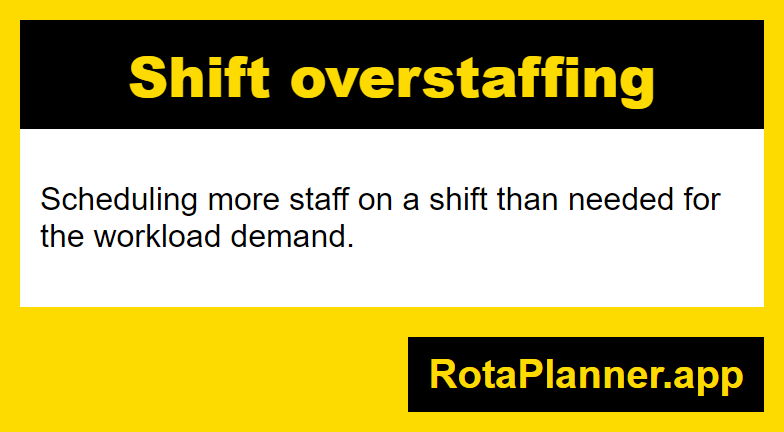
Shift overstaffing
Scheduling more staff on a shift than needed for the workload demand.
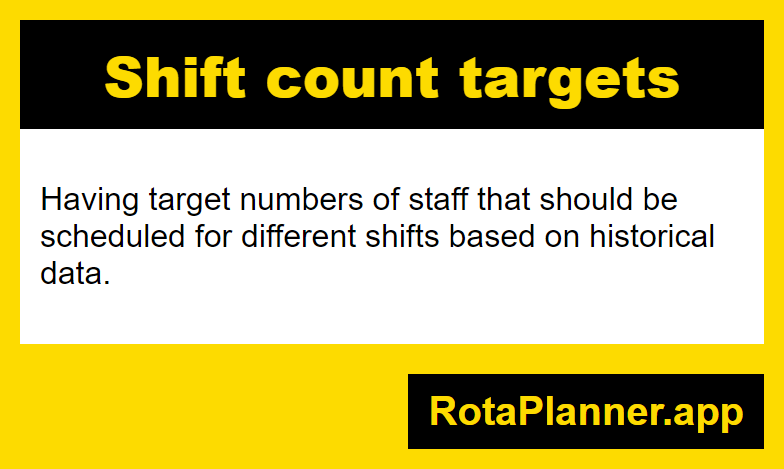
Shift count targets
Having target numbers of staff that should be scheduled for different shifts based on historical data.
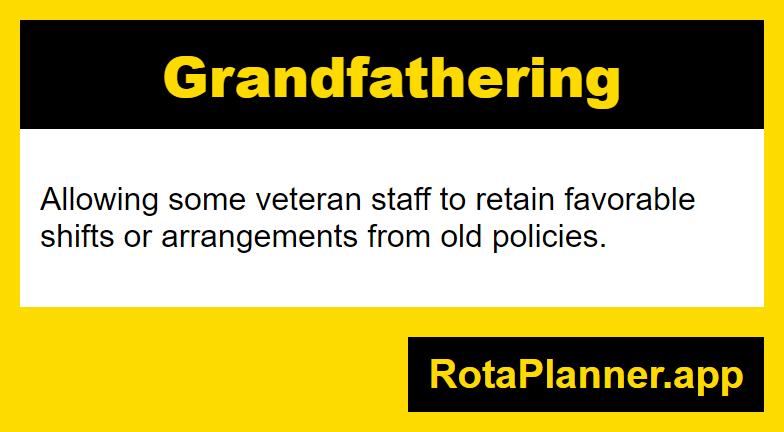
Grandfathering
Allowing some veteran staff to retain favorable shifts or arrangements from old policies.
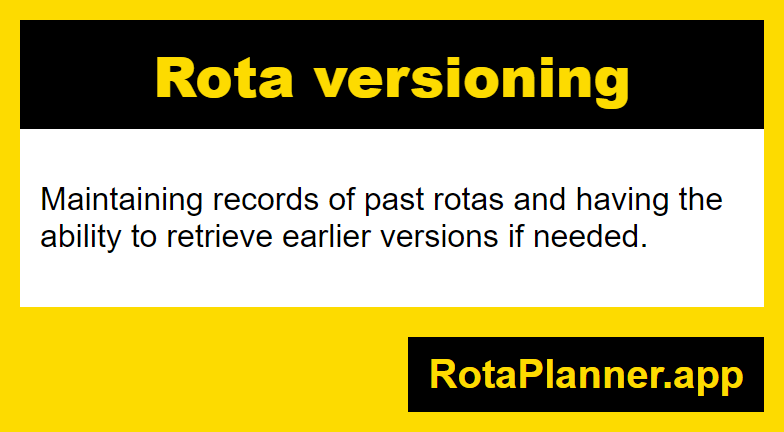
Rota versioning
Maintaining records of past rotas and having the ability to retrieve earlier versions if needed.
This is ofcourse supported by RotaPlanner.app.
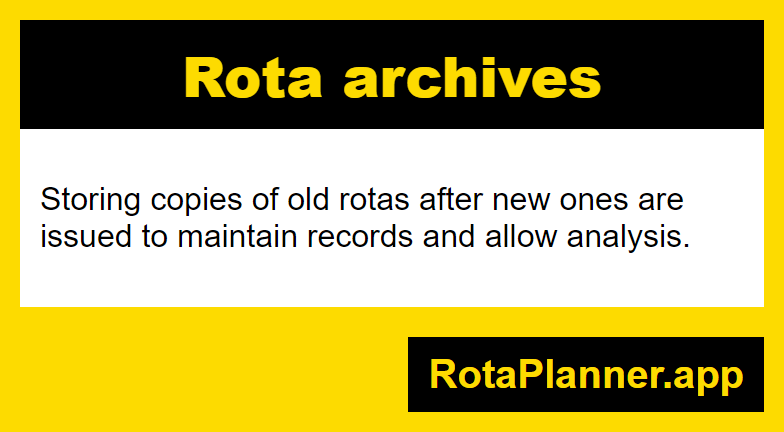
Rota archives
Storing copies of old rotas after new ones are issued to maintain records and allow analysis.
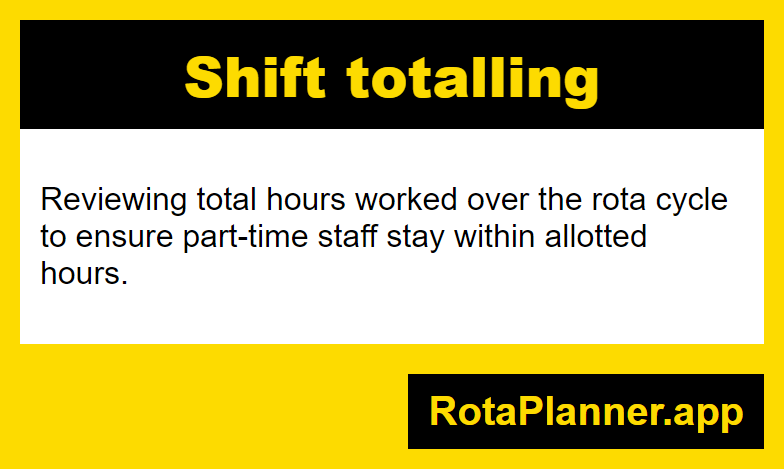
Shift totalling
Reviewing total hours worked over the rota cycle to ensure part-time staff stay within allotted hours.
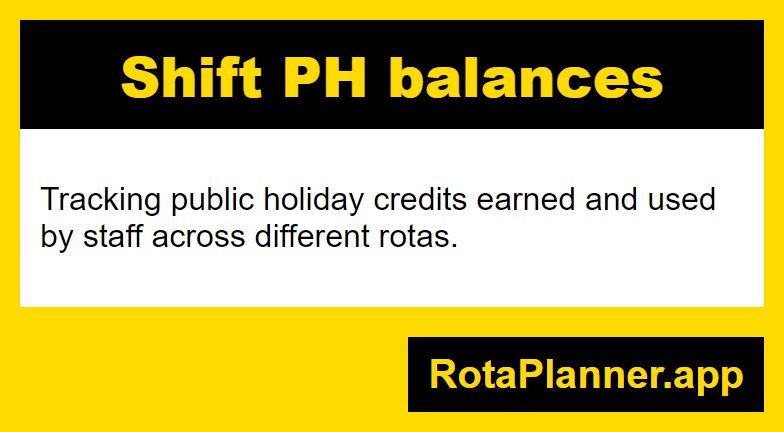
Shift PH balances
Tracking public holiday credits earned and used by staff across different rotas.

